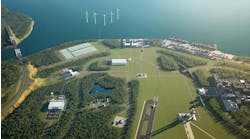Honeywell Process Solutions recently announced that its technology is going to improve operations for China’s long-distance Guangxi liquefied natural gas (LNG) high-pressure pipeline.
The Guangxi LNG pipeline will play a critical role in optimizing China’s energy structure and meeting the demand for natural gas in Guangxi. The project will use HPS gas measurement and equipment and software to measure the flow and pressure in the pipeline.
“We are able to draw upon our experience in long-distance, natural gas high-pressure pipelines to provide expertise to this essential clean energy project,” said Aldous Wong, HPS vice president, Greater China. “Pipelines have challenges that are very different from processing plants since you have to manage an operation that is hundreds or sometimes thousands of miles long. Measurements such as flow and pressure must be accurate and immediately accessible to keep the pipeline operating most efficiently.”
The pipeline should be completed later this year, and will have a capacity of 8 billion cubic meters of LNG a year and a total length of more than 1,300 miles, from Maoming to Beihai in the Guangxi region. This pipeline will be part of a network that transports natural gas and LNG from as far away as Kazakhstan to China.
Some of the integrated gas measurement technologies provided by Honeywell are the following:
Ultrasonic Flowmeters, which measure natural gas for custody transfer applications, which require high reliability, excellent metering certainty and repeatability.
Flow Computers, which can perform parallel calculations of compressibility according to all established methods, including GERG 88 S, AGA 8 and AGA NX 19.
SmartLine Temperature and Pressure transmitters, which are the industry's first modular and most reliable transmitter, which deliver value across the entire plant lifecycle. These transmitters reduce initial purchasing costs, provide flexibility for post start-up modifications, and reduce maintenance and inventory costs while providing high accuracy and stability.



